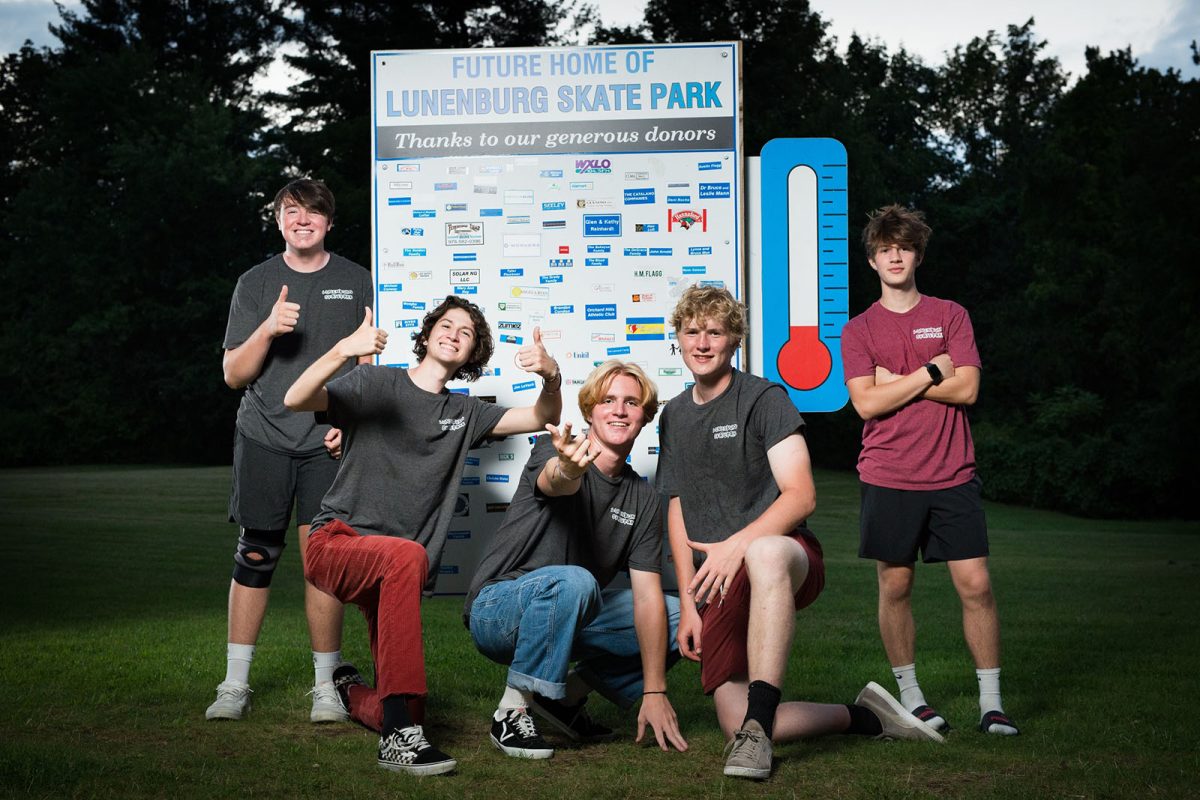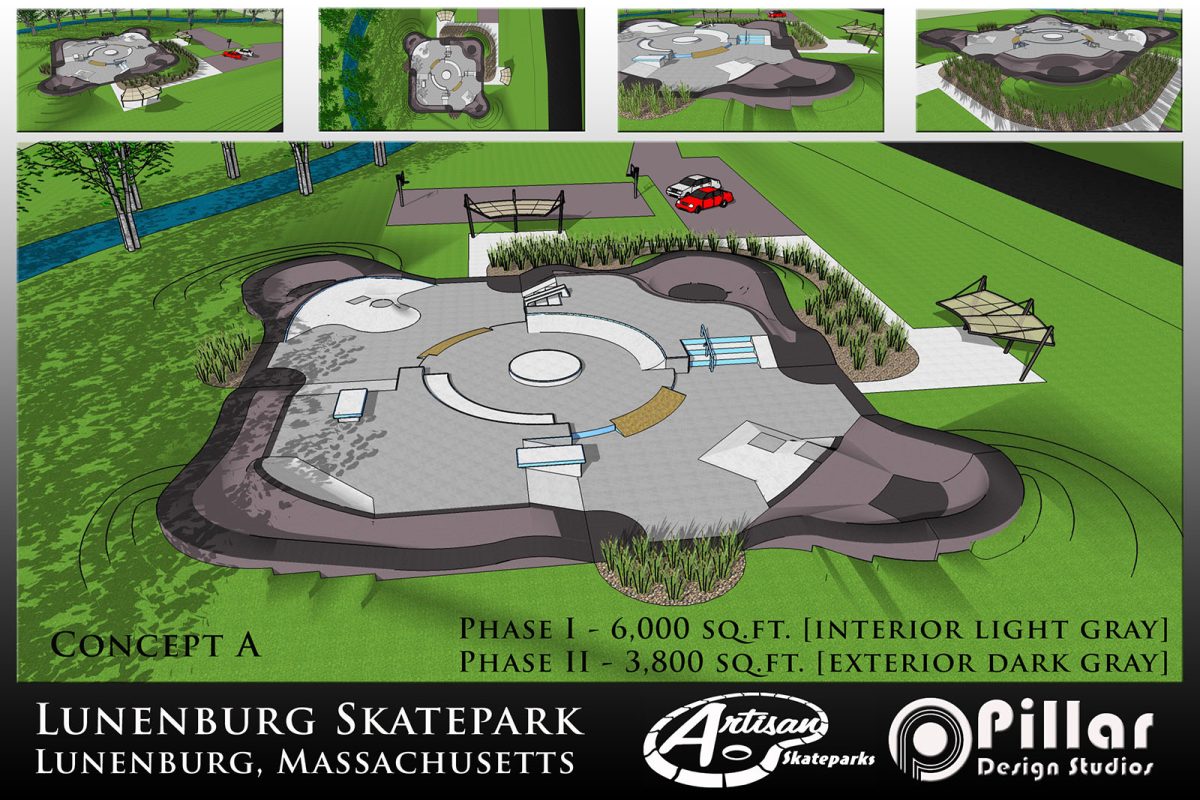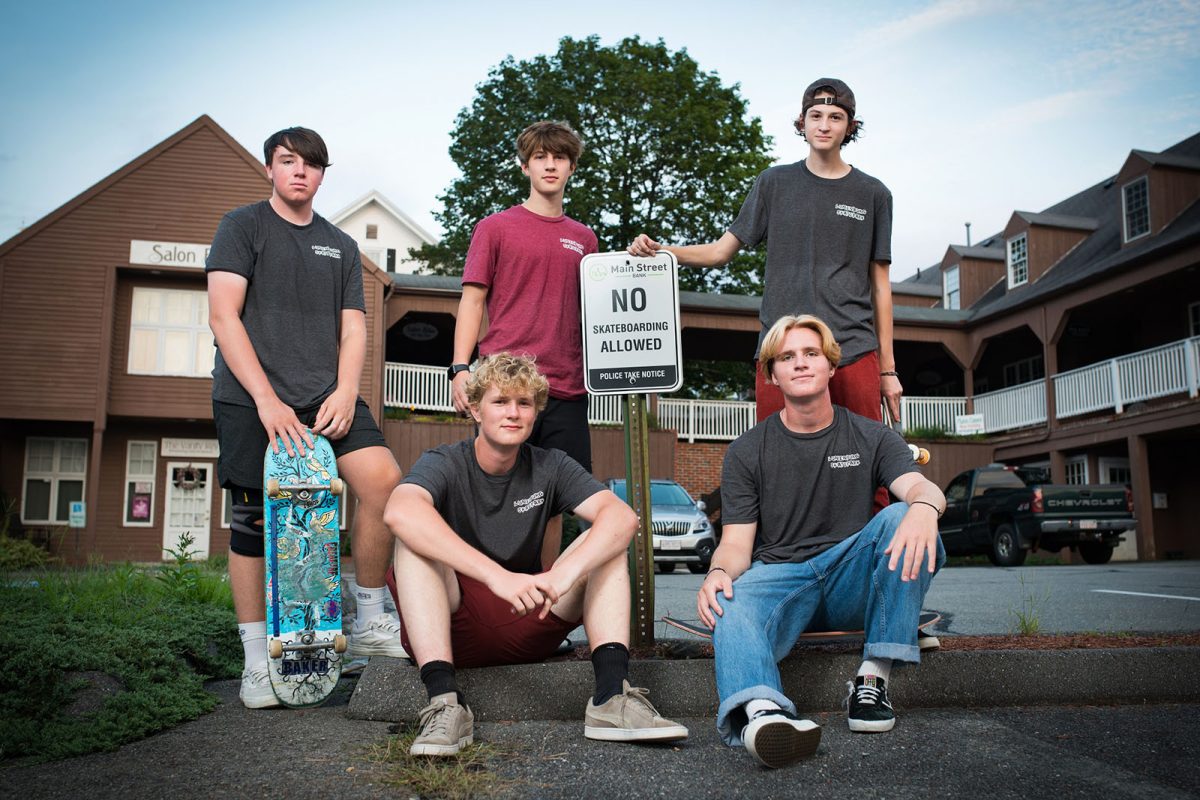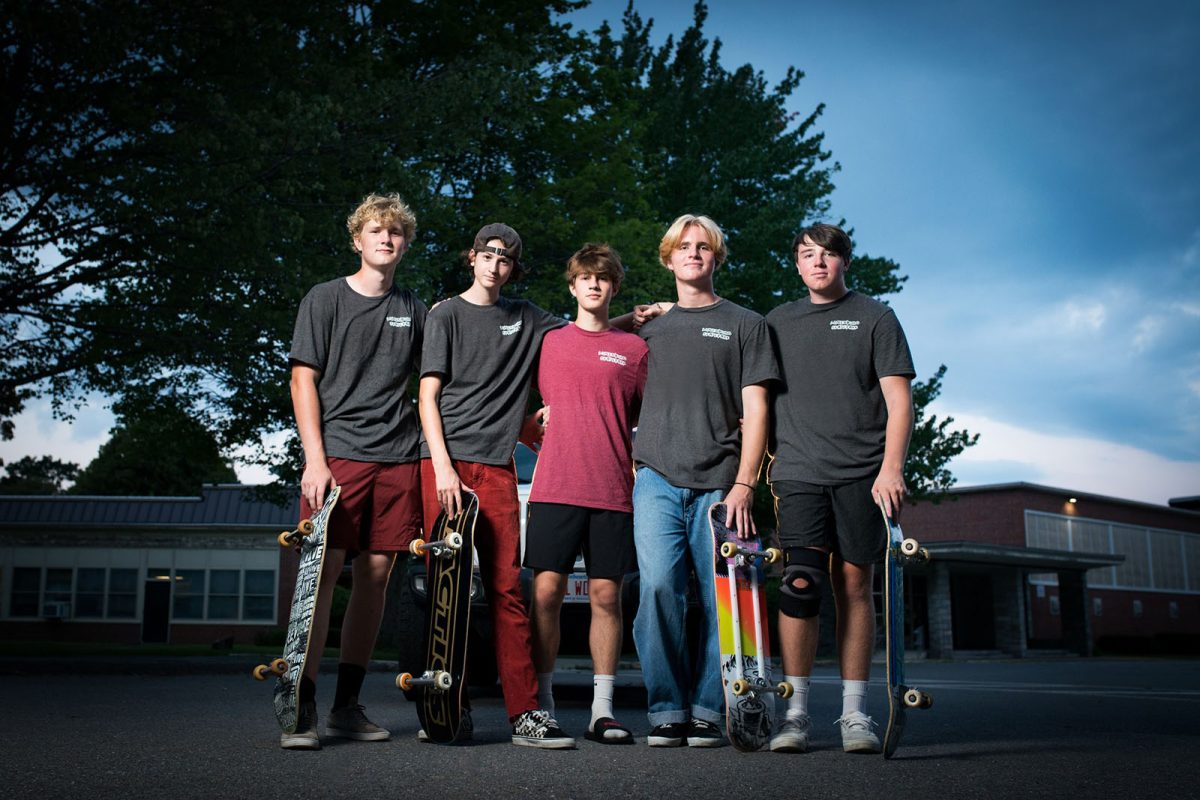Words by Kurtis Kendall
As the sun slowly rises in the clear morning sky, its summertime rays blistering any who stand beneath them, a group of boys are shredding a skatepark in Western Massachusetts. They are no older than 16, spending hours trying out new tricks and relearning old ones they’ve forgotten due to the COVID layoff. One records the other clearing a 5-step staircase, while another flies over a two-foot-wide gap, landing cleanly.
They cheer each other on with each kickflip and ollie they land, chide each other as they wipe out or lose their board in mid-air, bailing out of an attempted trick. To the untrained eye, they look like a normal group of kids in early summer.
But this crew isn’t just skating the park, this being the first time they’ve ever visited the location. They’re analyzing, documenting, taking note of each aspect and feature of the facility. They commit to memory what works and what doesn’t, debating whether the grass and trees in the center of the park are wasted space or a great addition.
They don’t understand or like the fence that surrounds the park and would prefer a smaller bowl that doesn’t consume as much of the allocated skating area. Some of the rails are a positive, others are deemed unnecessary. They love the double stairs, each accompanied by a ramp and a rail. They also don’t approve of the park’s location, as it’s a bit too far off the beaten track, making the facility attractive to unwanted graffiti artists. In their minds they are crafting the finest skatepark possible, taking the best elements of all the parks they have seen and skated, and axing the worst. Why? Because this group of teenagers are building their own skatepark.
Their hometown is a couple hours east of today’s destination, where the small community of Lunenburg sits in Central Massachusetts. The quiet neighborhood in Worcester County is one of the fastest-growing towns in the state. Yet, despite the increasing populace, the area lacks something the youth deem essential: their very own skate park.
“There isn’t really a skatepark around us, the closest one is a 30-minute drive away,” said Aidan Swift, one of the five boys who have been working on the Lunenburg Skate Park. “We don’t have our licenses or cars to drive, so it has always inconvenienced our parents to wait hours for us to finish skating.”
After almost four years of hard work, and countless hours spent trying to make their skatepark a reality, the team, consisting of Swift, Mason Whitcomb, Aidan Moore, Griffin Caiozzo, and Chris Roy, has received almost $80,000 in support from the local community. They have another $25,000 in tiered donations already committed once they hit $90K, putting them well on their way to their $400,000 goal. Even after their Western Mass skate tour through Northampton and Turners Falls, the crew continues their mission, meeting with state senators the following day to work towards gaining more local backing for the park.
But the objectives of their project weren’t always so clear-cut, especially when they first started this journey.
“At first we were an infomercial ‘company’ that had absolutely no purpose,” said Griffin Caiozzo, referring to the group’s first “project” during their Genius Hour block at school. The school initiative gives students one hour a week to work on something of their choice that they’re passionate about. “Then we started writing a script to a movie, and we quickly realized that it was going nowhere, and we needed a purpose. We wanted to do something bigger than ourselves and something that would have a lasting purpose in society.”
During this time of creative collaboration, one of them suggested ‘why don’t we build a skatepark?’ Most of the team members were budding skaters at the time and desired a place in town where they could hone their craft. As their far-fetched idea started to take shape and become serious, the crew began to meet regularly. They prepared for months to meet with their town’s board of selectmen, and in their first meeting they were able to secure land for their park.
“We weren’t asking for anything specific at first,” said Caiozzo, “We presented a couple of possible locations we thought the park would fit in well. And immediately on the first meeting we had with them, they loved the park so much and thought it was a cool idea. They actually gave us the right to build on a piece of prime, town owned Lunenburg real-estate right at the first meeting.”
Soon thereafter the team held their first fundraiser, bringing together their community like never before. “We ran a toll booth in the center of town which effectively involved volunteers standing in the middle of the road and soliciting donations from people driving by. Not only did we bring awareness for our cause, but we raised a little over $3000 in just four hours!” said Swift. The fundraisers didn’t stop there, as the boys were able to maintain their momentum and have hosted over 30 fundraising events since. “One of our favorites was the Battle of the Bands, where we hosted bands from all over the Northeast, they played their set and we had people vote on the winner, it was just a fun time overall and really helped bring the skater and music communities together.”
As their work picked up more steam, and the team garnered more support, they blew past their initial $12,000 goal for a small, simple park. Instead, they opted for a huge, permanent and lasting project that would make Lunenburg a destination skate spot.
Despite the scale of the undertaking, especially at their age (they started when they were 12 and 13 years old), they never grew discouraged. “I think we had consistent progress, especially at the beginning, so it didn’t look like it was slowing down at any time,” said Mason Whitcomb. “It looked like, even though the goal had increased a lot, we still were taking in lots of money and support from our fundraisers. We see the light at the end of the tunnel, even though it’s still a ways off and look forward to seeing the project through to completion.”
Of course, like the entire world, things came to a sudden halt in early 2020 due to the COVID-19 Pandemic. Still, the team did what they could, despite not being able to host their large-crowd fundraisers. They held virtual raffles and giveaways, supplementing however they could despite the months of progress lost.
When things began to open back up earlier this year, the crew took the opportunity to work with the folks at the United States Skateboard Education Association (USSEA) and hosted their first Learn to Skate event at their high school. The day was committed to teaching a group of younger skaters some tools of the trade.
“We hosted a Learn to Skate event in our high school parking lot where the five of us, as well as a couple of other volunteers, came together to offer local youths 30-minute skate lesson sessions. We all had a great time, enjoyed giving back to the community and it was nice to see that there’s more growth in skateboarding with a lot of kids interested in getting into the sport,” said Caiozzo.
The event was available to anyone who wanted to sign up and featured 50 new skaters who passed through that day. The experience was an eye-opener to the team, who got the chance to directly interact with the up-and-coming skaters behind them.
“Since we started the project, it has been non-stop from kids a couple grades above me to a bunch of grades below me just texting and constantly asking ‘when’s the park going to be done?’ There’s a lot of excitement to it, a lot of people are really excited to skate the park,” said Caiozzo.
The team recognizes that the generation behind them stands to benefit the most from the park. In acknowledging this reality, they want to clear the way for the kids younger than them, allowing them to take advantage of a local skate park from the first time they pick up a board.
“Even if the skater themselves can’t reap the rewards of putting in the work for a skatepark, maybe the future generations could,” said Whitcomb, “so they don’t have to go through the same thing we did.” Whitcomb sees their future park as “kind of a small legacy,” something the group of them helped to create for all future skaters in the area.
Seeing the younger generation up close is one of the main reasons the boys want to make sure they get their park just right. “Something our park needs to have is creativity,” said Caiozzo. “We don’t want something too basic that will get boring, we want something that has the ability to always be interesting.”
The idea of having the park be available to everyone is another essential element to their skate park. “We’re looking for a design to cater to different skill levels of skating,” said Whitcomb. “We’re looking for our park to be available to all people and not be extremely intimidating to someone who’s just trying to get into it.”
The team also wants to be inclusive to more than just skaters alone. “We want people riding all different types of devices,” said Aidan Moore. “We have a lot of bikers and scooter riders in our town, as well as a lot of little kids and we want them to have options to choose which wheeled device they want to ride on. We don’t want to limit it just to skateboarding. We want to allow everyone to pursue their passion.”
Despite the workload and the amount of time the boys have put into the skatepark, they want to make it clear that this isn’t just a job to them, this is what they want to be doing. “I don’t think people realize, they look at us and think ‘Oh look at these boys they’re just working so hard to get this skatepark,’ but it’s fun to be doing all this, it’s what we like to do,” said Whitcomb. “We enjoy the fundraisers, planning the events, raising the money, and even just skating, skating is something fun to do.”
Swift echoed the sentiment, saying how they would rather be doing this with their time than what some of their peers are doing. “I look at how other people spend their time and I feel like we have it a lot better because we actually have something [of value] that we’re working on while they don’t, and they just sit around on their phones all day.”
From the beginning, the boys have adopted a mantra they carry with them not just when working on their skatepark project, but in every aspect of their lives: if this isn’t fun, then let’s not do it. This project still enables them to be kids, even if it doesn’t fit the mold of what traditional teenagers are up to in their spare time.
“It’s kind of become our life, we’ve grown up with the park,” said Caiozzo. “These are the years you remember the most, it’s cool these are the years we’re spending on this because it’s definitely a fun experience.”
To anyone in a similar scenario, with a lack of safe, legal areas to skate nearby, the Lunenburg Skate Park team wants you to know it’s possible to achieve their level of success. “It’s not that big of a commitment if it’s something you’re really passionate about,” said Caiozzo. “If this is something you want to push for, go for it and make it happen.”
Back at the Northampton skatepark, the debate over the pros and cons of the skating area continues. But this isn’t work for the team. It isn’t growing up too soon. They’re having fun, that was the rule from the beginning. They’re learning, experiencing new things, all while doing what they enjoy. Spend an hour watching them skate and you’ll see that they’re not stressed or overwhelmed about this project. They’re just living life, making the best of their time.
As the sun nears its apex, it’s time for the crew to continue their mission. Off they go, cramped in the white Jeep they rode in on, to another skatepark. To analyze, to take notes, to build a perfect model in their head that will soon come to life in their hometown. But most of all, they’re off to just have fun.
For more information on the Lunenburg Skate Park Project, visit their website, or check out their Facebook and Instagram pages.




